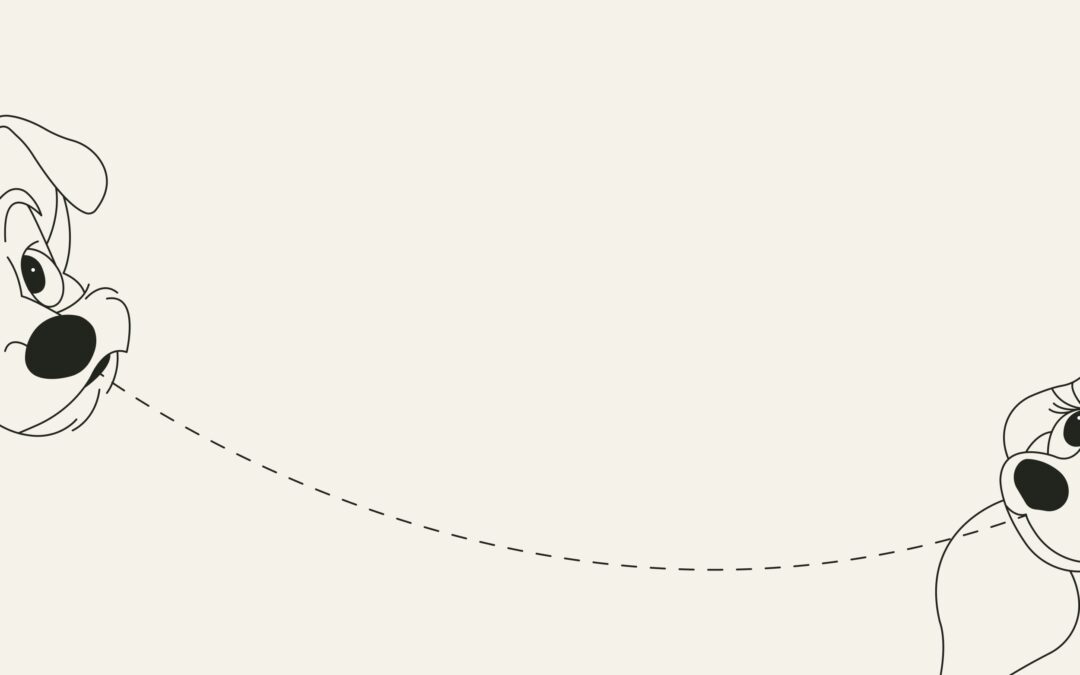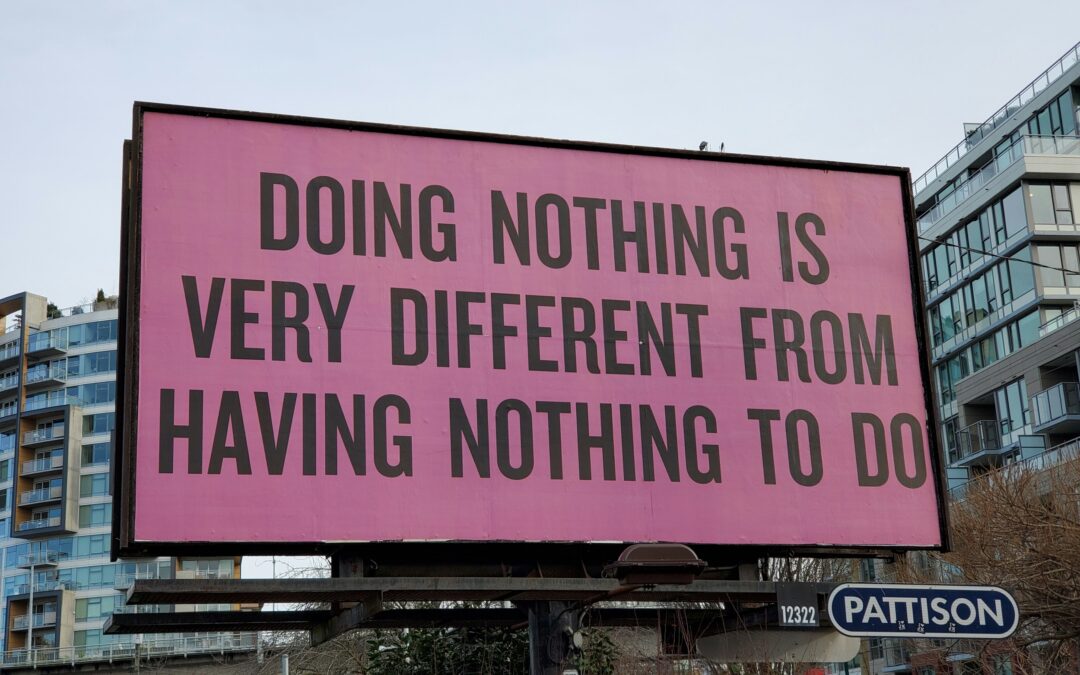
by Robyn Bolton | Jun 25, 2025 | Leadership, Stories & Examples, Strategy
Convinced that Strategic Foresight shows you a path through uncertainty? Great! Just don’t rush off, hire futurists, run some workshops, and start churning out glossy reports.
Activity is not achievement.
Learning from those who have achieved, however, is an excellent first activity. Following are the stories of two very different companies from different industries and eras that pursued Strategic Foresight differently yet succeeded because they tied foresight to the P&L.
Shell: From Laggard to Leader, One Decision at a Time
It’s hard to imagine Shell wasn’t always dominant, but back in the 1960s, it struggled to compete. Tired of being blindsided by competitors and external events, they sought an edge.
It took multiple attempts and more than 10 years to find it.
In 1959, Shell set up their Group Planning department, but its reliance on simple extrapolations of past trends to predict the future only perpetuated the status quo.
In 1965, Shell introduced the Unified Planning Machinery, a computerized forecasting tool to predict cash flow based on current results and forecasted changes in oil consumption. But this approach was abandoned because executives feared “that it would suppress discussion rather than encourage debate on differing perspectives.”
Then, in 1967, in a small 18th-floor office in London, a new approach to ongoing planning began. Unlike past attempts, the goal was not to predict the future. It was to “modify the mental model of decision-makers faced with an uncertain future.”
Within a few years, their success was obvious. Shell executives stopped treating scenarios as interesting intellectual exercises and started using them to stress-test actual capital allocation decisions.
This doesn’t mean they wholeheartedly embraced or even believed the scenarios. In fact, when scenarios suggested that oil prices could spike dramatically, most executives thought it was far-fetched. Yet Shell leadership used those scenarios to restructure their entire portfolio around different types of oil and to develop new capabilities.
The result? When the 1973 oil crisis hit and oil prices quadrupled from $2.90 to $11.65 per barrel, Shell was the only major oil company ready. While competitors scrambled and lost billions, Shell turned the crisis into “big profits.”
Disney: From Missed Growth Goals to Unprecedented Growth
In 2012, Walt Disney International’s (WDI) aggressive growth targets collided with a challenging global labor market, and traditional HR approaches weren’t cutting it.
Andy Bird, Chairman of Walt Disney International, emphasized the criticality of the situation when he said, “The actions we make today are going to make an impact 10 to 20 years down the road.”
So, faced with an unprecedented challenge, the team pursued an unprecedented solution: they built a Strategic Foresight capability.
WDI trained over 500 leaders across 45 countries, representing five percent of its workforce, in Strategic Foresight. More importantly, Disney integrated strategic foresight directly into their strategic planning and performance management processes, ensuring insights drove business decisions rather than gathering dust in reports.
For example, foresight teams identified that traditional media consumption was fracturing (remember, this was 2012) and that consumers wanted more control over when and how they consumed content. This insight directly shaped Disney+’s development.
The results speak volumes. While traditional media companies struggled with streaming disruption, Disney+ reached 100 million subscribers in just 16 months.
Two Paths. One Result.
Shell and Disney integrated Strategic Foresight differently – the former as a tool to make high-stakes individual decisions, the latter as an organizational capability to affect daily decisions and culture.
What they have in common is that they made tomorrow’s possibilities accountable to today’s decisions. They did this not by treating strategic foresight as prediction, but as preparation for competitive advantage.
Ready to turn these insights into action? Next week, we’ll dive into the tools in the Strategic Foresight toolbox and how you and your team can use them to develop strategic foresight that drives informed decisions.

by Robyn Bolton | May 30, 2025 | Leadership, Strategy
Conventional wisdom tells us that transformation flows from the C-suite down because real change requires executive mandates and company-wide rollouts. But what if our focus on building transformation momentum is exactly backward?
Ever since reading Multipliers, where Liz Wiseman revealed how the best leaders amplify their people rather than diminish them, I’ve wondered if, like innovation, organizational transformation and change also require us to do the opposite of our instincts.
I recently had the opportunity to dig deeper into this topic with her, and I couldn’t resist exploring how change really happens in large organizations.
What emerged wasn’t another framework—it was something more brilliant and subversive: how middle managers quietly become change agents, why sustainable transformation looks nothing like a launch event, and the liberating truth that leaders don’t need to be perfect.
Robyn Bolton: What’s the one piece of conventional wisdom about leading change that you believe organizations need to unlearn?
Lize Wiseman: I don’t believe that change needs to start, or even be sponsored, at the top of the organization. I’ve seen so much change led from the middle management ranks. When middle managers experiment with new mindsets and practices inside their organizations, they produce pockets of success—anomalies that catch the attention of senior executives and corporate staffers who are highly adept at detecting variances (both negative and positive). When senior executives notice positive outcomes, they are quick to elevate and endorse the new practices, in turn spreading the practices to other parts of the organization. In other words, most senior executives are adept at spotting a parade and getting in front of it! (Incidentally, this is one of several executive skills you won’t find documented on any official leadership competency model.) If you don’t yet have the political capital to lead a company-wide initiative, run a pilot with a few rising middle managers. Shine a spotlight on their success and let the practices spread to their peers. Expose their good work to the executive team and make yourself available to turn the parade into a movement.
RB: In your research and work, what’s the most surprising pattern you’ve observed about successful organizational transformation?”
LW: As mentioned above, I believe the starting point for transformation is less important than how you will sustain the momentum you’ve generated. Unfortunately, most new initiatives—be they corporate change initiatives or personal improvement plans—begin with a bang but fizzle out in what I call “the failure to launch” cycle. Transformation that is sustained over time usually starts small and builds a series of successive wins. Each win provides the energy needed to carry the work into the next phase. These series of wins generate the energy and collective will needed to complete the cycle of success. As that cycle spins, nascent beliefs become more deeply entrenched and old survival strategies get supplanted by new methods to not just survive but thrive inside the organization.
Each little success requires careful support and an evidence-backed PR campaign to build awareness and broad support for the new direction. Nascent behavior and beliefs are fragile and will be overpowered by older assumptions until they are strengthened by supporting evidence. The supporting evidence forms a buttress around the budding mindset or practices, much like a brace around a sapling provides stability until the tree is strong enough to stand on its own.
RB: How has your thinking about what makes an effective leader evolved over the course of your career?
LW: When I began researching good leadership, most diminishing leaders appeared to be tyrannical, narcissistic bullies. But as I further studied the problem, I’ve come to see that the vast majority of the diminishing happening inside our workplaces is done with the best of intentions, by what I call the Accidental Diminisher—good people trying to be good managers. I’ve become less interested in knowing who is a Diminisher and much more interested in understanding what provokes the Diminisher tendencies that lurk inside each of us.
RB: When you consider all the organizations you’ve studied, what’s the most powerful lesson about driving meaningful change that most leaders overlook?
LW: One of the dangers of trying to lead change from the top is that most leaders have a hard time being a constant role model for the changes they advocate for. Even the best leaders can’t always display the positive behaviors they espouse and ask their organizations to embody. It’s human to slip up. But when behavior change is led primarily from the top, these all-too-natural slip-ups can become major setbacks for the whole organization because they provide visible evidence that the new behavior isn’t required or feasible, and followers can easily give up. Wise leaders understand this dynamic and build a hypocrisy factor into their change plans–meaning, they acknowledge upfront that they aspire to the new behavior but don’t always fully embody it, yet. They set the expectation that there will be setbacks and invite people to help them be better leaders as well. They acknowledge that the route to new behavior typically looks like the acclimation process used by high-elevation climbers. These climbers spend some of their days in ascent, but once they reach new elevations, often have to descend to lower camps to acclimate. It’s the proverbial two-steps-forward, one-step-back process. When leaders acknowledge their shortcomings and the likelihood of their future missteps, they not only minimize the chance that others give up when they see hypocrisy above them, but they create space for others to make and recover from their own mistakes.
RB: Looking ahead, what do you believe is the most important capability leaders need to develop to help their organizations thrive?
LW: Leading in uncertainty, specifically the ability to lead people to destinations that they themselves have never been.
I love that Liz’s insights flip the script, calling on people outside the C-Suite to stop waiting for permission and start running quiet experiments, building proof points, and letting success do the selling.
The next time you want a change or have change thrust upon you, don’t look for a parade to lead. Look for one person willing to try something different and get to work.

by Robyn Bolton | May 21, 2025 | Innovation, Leadership, Tips, Tricks, & Tools
“What will you do on vacation?” a colleague asked.
“Nothing,” I replied.
The uncomfortable silence that followed spoke volumes. In boardrooms and during quarterly reviews, we celebrate constant motion and back-to-back calendars. Yet, study after study shows that the most successful leaders embrace a counterintuitive edge: strategic idleness.
While your competitors exhaust themselves in perpetual busyness, research shows that deliberate mental downtime activates the brain networks responsible for strategic foresight, innovative solutions, and clear decision-making.
The Status Trap of Busy-ness
At one company I worked with, there was only one acceptable answer to “How are you doing?” “Busy.” The answer wasn’t a way to avoid an awkward hallway conversation. It was social currency. If you’re busy, you’re valuable. If you’re fine, you’re expendable.
A 2017 study published in the Journal of Consumer Research confirmed what Columbia, Georgetown, and Harvard researchers discovered: being busy is now a status symbol, signaling “competence, ambition, and scarcity in the market.”
But here’s the uncomfortable truth: your packed schedule is undermining the very outcomes you’re accountable for delivering.
Your Brain’s Innovation Engine
Neuroscience has confirmed what innovators have long practiced: Strategic Idleness. While you consciously “do nothing,” your default mode network (DMN) engages, making unexpected connections across stored information and experiences.
Recent research published in the journal Brain demonstrates that the DMN is activated during creative thinking, with a specific pattern of neural activity occurring during the search for novel ideas. This network is essential for both spontaneous thought and divergent thinking, core elements of innovation.
So if you’ve always wondered why you get your best ideas in the shower, it’s because your DMN is powered all the way up.
Three Ways to Power-Up Your Engine
Here are three executive-grade approaches to strategic idleness without more showers or productivity sacrifices:
- Pause for 10 Minutes Before Making a Decision
Before making high-stakes decisions, implement a mandatory 10-minute idleness period. No email, no conversation—just sitting. Research on cognitive recovery suggests that this brief reset activates your DMN, allowing for a more comprehensive consideration of variables and strategic implications.
- Take a Walking Meeting with Yourself
Block 20 minutes in your calendar each week for a solo walking meeting (and then take the walk!). No other attendees, no agenda, just walking. Researchers at Stanford University found that walking increases creative output by an average of 60% compared to sitting. The combination of physical movement and mental space creates ideal conditions for your brain to generate solutions to problems you didn’t know you had.
- Schedule 3-5 minutes of Strategic Silence before key discussions
Research on group dynamics shows that silent reflection before discussion can reduce groupthink and increase the quality of ideas by helping team members process information more deeply. Before you dive into a critical topic at your next leadership meeting, schedule 3-5 minutes of silence. Explain that this silence is for individual reflection and planning for the upcoming discussion, not for checking email or taking bathroom breaks. Acknowledge that it will feel awkward, but that it’s critical for the upcoming discussion and decision.
Remember, You’re Not Doing Nothing If You’re being Strategically Idle
The most valuable asset in your organization isn’t technology, capital, or even the products you sell. It’s the quality of thinking that goes into critical decisions. Strategic idleness isn’t inaction; it’s the deliberate cultivation of conditions that foster innovation, clear judgment, and strategic foresight.
While your competitors remain trapped in perpetual busyness, by using executive advantage of strategic idleness, your next breakthrough will present itself.
This is an updated version of the June 9, 2019, post, “Do More Nothing.”

by Robyn Bolton | Mar 11, 2025 | Innovation, Leadership, Stories & Examples
Ideas and insights can emerge from the most unexpected places. My mom was a preschool teacher, and I often say that I learned everything I needed to know about managing people by watching her wrangle four-year-olds. But it only recently occurred to me that the most valuable business growth lessons came from my thoroughly unremarkable years playing the flute in middle school.
6th Grade: Following the Manual and Falling Flat
Sixth grade was momentous for many reasons, one being that that was when students could choose an instrument and join the school band. I chose the flute because my friends did, and there was a rumor that clarinets gave you buck teeth—I had enough orthodontic issues already.
Each week, our “jill of all trades” teacher gathered the flutists together and guided us through the instructional book until we could play a passable version of Yankee Doodle. I practiced daily, following the book and playing the notes, but the music was lifeless, and I was bored.
7th Grade: Finding Context and Direction
In seventh grade, we moved to full band rehearsals with a new teacher trained to lead an entire band (he was also deaf in one ear, which was, I think, a better qualification for the job than his degree). Hearing all the instruments together made the music more interesting and I was more motivated to practice because I understood how my part played in the whole. But I was still a very average flutist.
To help me improve, my parents got me a private flute teacher. Once a week, Mom drove me to my flute teacher’s house for one-on-one tutoring. She corrected mistakes when I made them, showed me tips and tricks to play faster and breathe deeper, and selected music I enjoyed playing. With her help, I became an above-average flutist.
Post-Grad: 5 Business Truths from Band Class
I stopped playing in the 12th grade. Despite everyone’s efforts, I was never exceptional—I didn’t care enough to do the work required.
Looking back, I realized that my mediocrity taught me five crucial lessons that had nothing to do with music:
- Don’t do something just because everyone else is. I chose the flute because my friends did. I didn’t choose my path but followed others—that’s why the music was lifeless.
- Following the instruction manual is worse than doing nothing. You can’t learn an instrument from a book. Are you sharp or flat? Too fast or slow? You don’t know, but others do (but don’t say anything).
- Part of a person is better than all of a book. Though spread thin, the time my teachers spent with each instrumental section was the difference between technically correct noise and tolerable music.
- A dedicated teacher beats a distracted one. Having someone beside me meant no mistake went uncorrected and no triumph unrecognized. She knew my abilities and found music that stretched me without causing frustration.
- If you don’t want to do what’s required, be honest about it. I stopped wanting to play the flute in 10th grade but kept going because it was easier to maintain the status quo. In hindsight, a lot of time, money, and effort would have been saved if I stopped playing when I stopped caring.
The Executive Orchestra: What Grade Are You In?
How many executives remain in sixth grade—following management fads because of FOMO, buying books, handing them out, and expecting magic? And, when that fails, hiring someone to do the work for them and wondering why the music stops when the contract ends?
How many progress to seventh grade, finding someone who can teach, correct, and celebrate their teams as they build new capabilities?
How do what I should have done in 10th grade and be honest about what they are and aren’t willing to do, spending time and resources on priorities rather than maintaining an image?
More importantly, what grade are you in?

by Robyn Bolton | Sep 30, 2020 | Innovation, Leadership, Stories & Examples
“How are you doing? How are you handling all this?”
It seems like 90% of conversations these days start with those two sentences. We ask out of genuine concern and also out of a need to commiserate, to share our experiences, and to find someone that understands.
The connection these questions create is just one of the Gifts of Uncertainty that have been given to us by the pandemic.
Yes, I know that the idea of uncertainty, especially in big things like our lives and businesses, being a gift is bizarre. When one of my friends first suggested the idea, I rolled my eyes pretty hard and then checked to make sure I was talk to my smart sarcastic fellow business owner and not the Dali Lama.
But as I thought about it more, started looking for “gifts” in the news and listening for them in conversations with friends and clients, I realized how wise my friend truly was.
Faced with levels of uncertainty we’ve never before experienced, people and businesses are doing things they’ve never imagined having to do and, as a result, are discovering skills and abilities they never knew they had. These are the Gifts of Uncertainty
- Necessity of offering a vision – When we’re facing or doing something new, we don’t have all the answers. But we don’t need all the answers to take action. The people emerging as leaders, in both the political and business realms, are the ones acknowledging this reality by sharing what they do know, offering a vision for the future, laying out a process to achieve it, and admitting the unknowns and the variables that will affect both the plan and the outcome.
- Freedom to experiment – As governments ordered businesses like restaurants to close and social distancing made it nearly impossible for other businesses to continue operating, business owners were suddenly faced with a tough choice – stop operations completely or find new ways to continue to serve. Restaurants began to offer carry out and delivery. Bookstores, like Powell’s in Portland OR and Northshire Bookstore in Manchester VT, also got into curbside pick-up and delivery game. Even dentists and orthodontists began to offer virtual visits through services like Wally Health and Orthodontic Screening Kit, respectively.
- Ability to change – Businesses are discovering that they can move quickly, change rapidly, and use existing capabilities to produce entirely new products. Nike and HP are producing face shields. Zara and Prada are producing face masks. Fanatics, makers of MLB uniforms, and Ford are producing gowns. GM and Dyson are gearing up to produce ventilators. And seemingly every alcohol company is making hand sanitizer. Months ago, all of these companies were in very different businesses and likely never imagined that they could or would pivot to producing products for the healthcare sector. But they did pivot.
- Power of Relationships – Social distancing and self-isolation are bringing into sharp relief the importance of human connection and the power of relationships. The shift to virtual meetups like happy hours, coffees, and lunches is causing us to be thoughtful about who we spend time with rather than defaulting to whoever is nearby. We are shifting to seeking connection with others rather than simply racking up as many LinkedIn Connections, Facebook friends, or Instagram followers as possible. Even companies are realizing the powerful difference between relationships and subscribers as people unsubscribed en mass to the “How we’re dealing with COVID-19 emails” they received from every company with which they had ever provided their information.
- Business benefit of doing the right thing – In a perfect world, businesses that consistently operate ethically, fairly, and with the best interests of ALL their stakeholders (not just shareholders) in mind, would be rewarded. We are certainly not in a perfect world, but some businesses are doing the “right thing” and rea being rewarded. Companies like Target are offering high-risk employees like seniors pregnant women, and those with compromised immune systems 30-days of paid leave. CVS and Comcast are paying store employees extra in the form of one-time bonuses or percent increases on hourly wages. Sweetgreen and AllBirds are donating food and shoes, respectively, to healthcare workers. On the other hand, businesses that try to leverage the pandemic to boost their bottom lines are being taken to task. Rothy’s, the popular shoe brand, announced on April 13 that they would shift one-third of their production capacity to making “disposable, non-medical masks to workers on the front line” and would donate five face masks for every item purchased. Less than 12 hours later, they issued an apology for their “mis-step,” withdrew their purchase-to-donate program, and announced a bulk donation of 100,000 non-medical masks.
Before the pandemic, many of these things seemed impossibly hard, even theoretical. In the midst of uncertainty, though, these each of these things became practical, even necessary. As a result, in a few short weeks, we’ve proven to ourselves that we can do what we spent years saying we could not.
These are gifts to be cherished, remembered and used when the uncertainty, inevitably, fades.
Originally published on Mat 19, 2020 on Forbes.com




